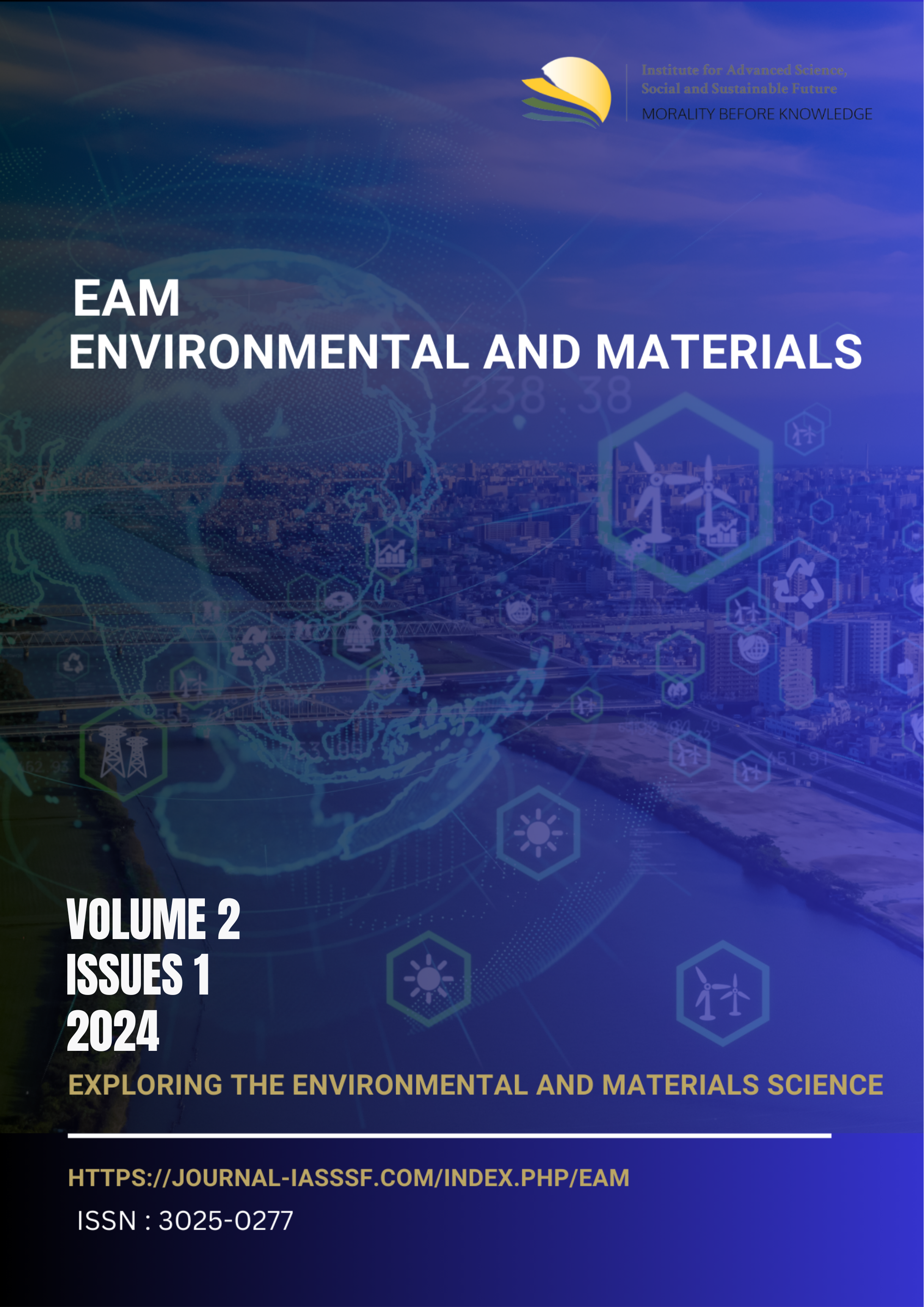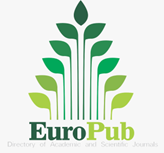A study on spatio-temporal trend of rubber leaf fall phenomenon using planetscope multi-index vegetation imagery in relations to climatological conditions
DOI:
https://doi.org/10.61511/eam.v2i1.2024.906Keywords:
rubber plant, leaf fall disease, vegetation index, remote sensing, climatological conditionsAbstract
Background: Rubber plants are one of the most important plantation commodities in Indonesia. However, rubber production has declined due to leaf fall disease caused by the pathogen Pestalotiopsis sp. This study aims to analyze the spatial and temporal distribution of rubber plant leaf fall disease using multi-vegetation indices from PlanetScope imagery, as well as to analyze the influence of climatological conditions on the disease. Methods: The research was conducted at the Sembawa Rubber Research Center Garden, South Sumatra, using PlanetScope imagery data and climatological data in 2017 (before leaf fall) and 2023 (after leaf fall). Finding: Spatially, the 2023 leaf fall occurred in almost the entire garden area with poor to moderate levels. Blocks 2013D, 2012F, and 2009F experienced the most severe levels, with a total defoliated area reaching 396.76 ha. Analysis of monthly variations in vegetation index values revealed a decrease in values during leaf fall due to Pestalotiopsis sp., specifically in February, May, and September 2023. Statistical test results showed significant differences in vegetation index values between 2017 and 2023. Furthermore, based on Spearman's correlation analysis, there was a positive correlation between vegetation index values and humidity, but no significant correlation with rainfall and temperature. Conclusion: This research provides insights into mapping and monitoring rubber leaf fall disease using remote sensing data and climatological factors, which can be used for more effective rubber plantation management. However, the study has some limitations: monthly Planet data for 2017 is not fully available, several Planet image scenes from 2017 still have more than 50% cloud cover, and there may be biases as plants falling into the low health class are included in the high range of vegetation index values. Novelty/Originality of this Study: By integrating spatial and temporal analyses with climatological data, the research provides a precise and comprehensive method for monitoring LFD and understanding its environmental determinants, thereby enhancing traditional rubber plantation management practices.
References
Azizan, F. A., Kiloes, A. M., Astuti, I. S., & Abdul Aziz, A. (2021). Application of optical remote sensing in rubber plantations: a systematic review. Remote Sensing, 13(3), 429. https://doi.org/10.3390/rs13030429
Badan Statistik Pusat. (2022). Provinsi Sumatera Selatan Dalam Angka 2022. https://sumsel.bps.go.id/publication/2022/02/25/f9646f2d59150d7c3e1201c2/provinsi-sumatera-selatan-dalam-angka-2022.html
Congalton, R. G., & Green, K. (2019). Assessing the accuracy of remotely sensed data: principles and practices. CRC press. https://doi.org/10.1201/9780429052729
Dubbini, M., Palumbo, N., De Giglio, M., Zucca, F., Barbarella, M., & Tornato, A. (2022). Sentinel-2 data and unmanned aerial system products to support crop and bare soil monitoring: Methodology based on a statistical comparison between remote sensing data with identical spectral bands. Remote Sensing, 14(4), 1028. https://doi.org/10.3390/rs14041028
Febbiyanti, T. R., & Fairuzah, Z. (2019). Identifikasi penyebab kejadian luar biasa penyakit gugur daun karet di Indonesia. Jurnal Penelitian Karet, 193-206. https://doi.org/10.22302/ppk.jpk.v37i2.616
Febbiyanti, T. R. (2020). Pengaruh faktor abiotik terhadap perkembangan penyakit karet dan metode peramalan epidemi. Warta Perkaretan, 39(2), 95-114. https://doi.org/10.22302/ppk.wp.v39i2.729
Gittelson, B. (1996). Bio-Rhythm A Personal Science. Grand Central Publishing.
Kementerian Pertanian. (2022). Statistik Perkebunan Indonesia: Komoditas Karet 2021-2023. Direktorat Jenderal Perkebunan. https://ditjenbun.pertanian.go.id/pojok-media/publikasi/
Kunz, A. (2017). Misclassification and kappa-statistic: theoretical relationship and consequences in application. Ludwig-Maximilians-Universitat Munchen Institut fur Statistik.
Liu, H. Q., & Huete, A. (1995). A feedback based modification of the NDVI to minimize canopy background and atmospheric noise. IEEE transactions on geoscience and remote sensing, 33(2), 457-465. https://doi.org/10.1109/TGRS.1995.8746027
Mesas-Carrascosa, F. J., Santano, D. V., Meroño, J. E., De La Orden, M. S., & García-Ferrer, A. (2015). Open source hardware to monitor environmental parameters in precision agriculture. Biosystems engineering, 137, 73-83. https://doi.org/10.1016/j.biosystemseng.2015.07.005
Mu, X., Song, W., Gao, Z., McVicar, T. R., Donohue, R. J., & Yan, G. (2018). Fractional vegetation cover estimation by using multi-angle vegetation index. Remote sensing of environment, 216, 44-56. https://doi.org/10.1016/j.rse.2018.06.022
Neyman, J. (1992). On the two different aspects of the representative method: the method of stratified sampling and the method of purposive selection. In Breakthroughs in statistics: Methodology and distribution (pp. 123-150). New York, NY: Springer New York. https://link.springer.com/chapter/10.1007/978-1-4612-4380-9_12
Qi, J., Chehbouni, A., Huete, A. R., Kerr, Y. H., & Sorooshian, S. (1994). A modified soil adjusted vegetation index. Remote sensing of environment, 48(2), 119-126. https://doi.org/10.1016/0034-4257(94)90134-1
Sahuri, S., & Cahyo, A. N. (2018). Hubungan Antara Neraca Air Lahan Terhadap Produksi Karet Klon BPM24. Widyariset, 4(2), 163-172. https://garuda.kemdikbud.go.id/documents/detail/842599
Saputra, K. (2019). Pengendalian Penyakit Gugur Daun (Pestalotiopsis sp.) Pada Tanaman Karet Klon GT 1 dengan Menggunakan Biopestisida. Sriwijaya University. https://repository.unsri.ac.id/26804/3/RAMA_54211_05071181520004_0025115804__01_front_ref.pdf
Team, P. (2017). Planet application program interface: In space for life on Earth. San Francisco, CA, 2017(40), 2. https://www.planet.com/industries/education-and-research/
Downloads
Published
How to Cite
Issue
Section
Citation Check
License
Copyright (c) 2024 Environmental and Materials

This work is licensed under a Creative Commons Attribution 4.0 International License.
















